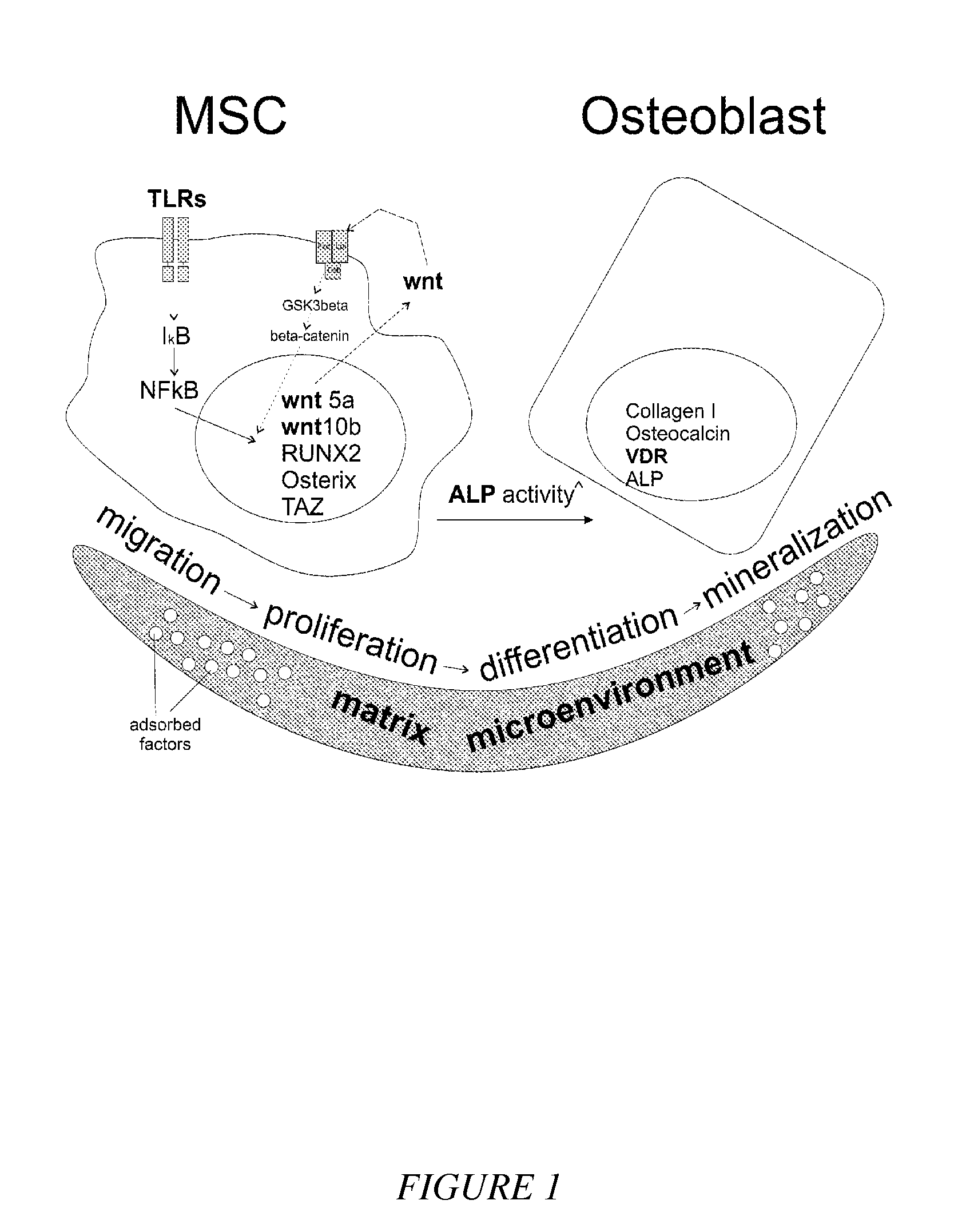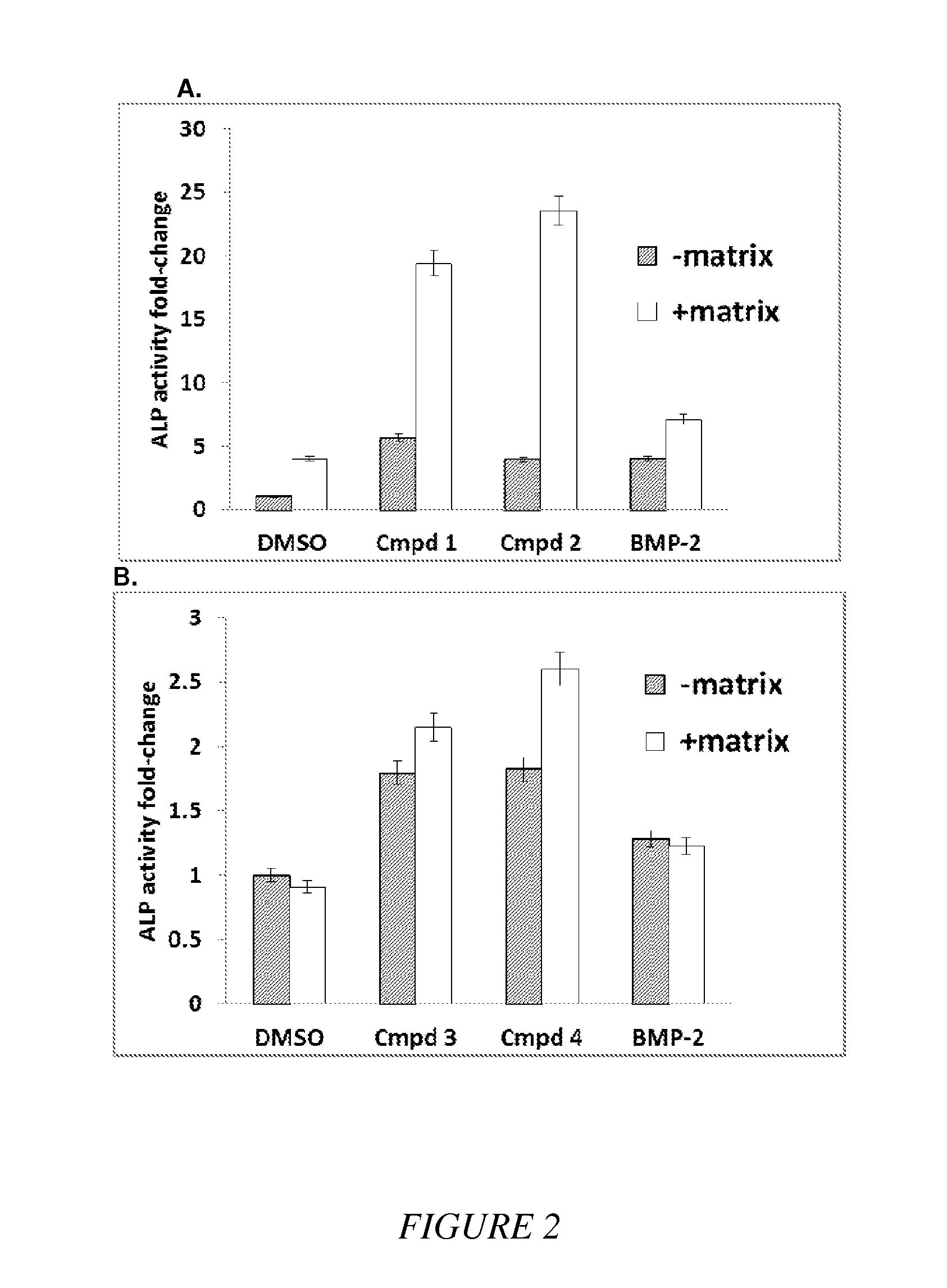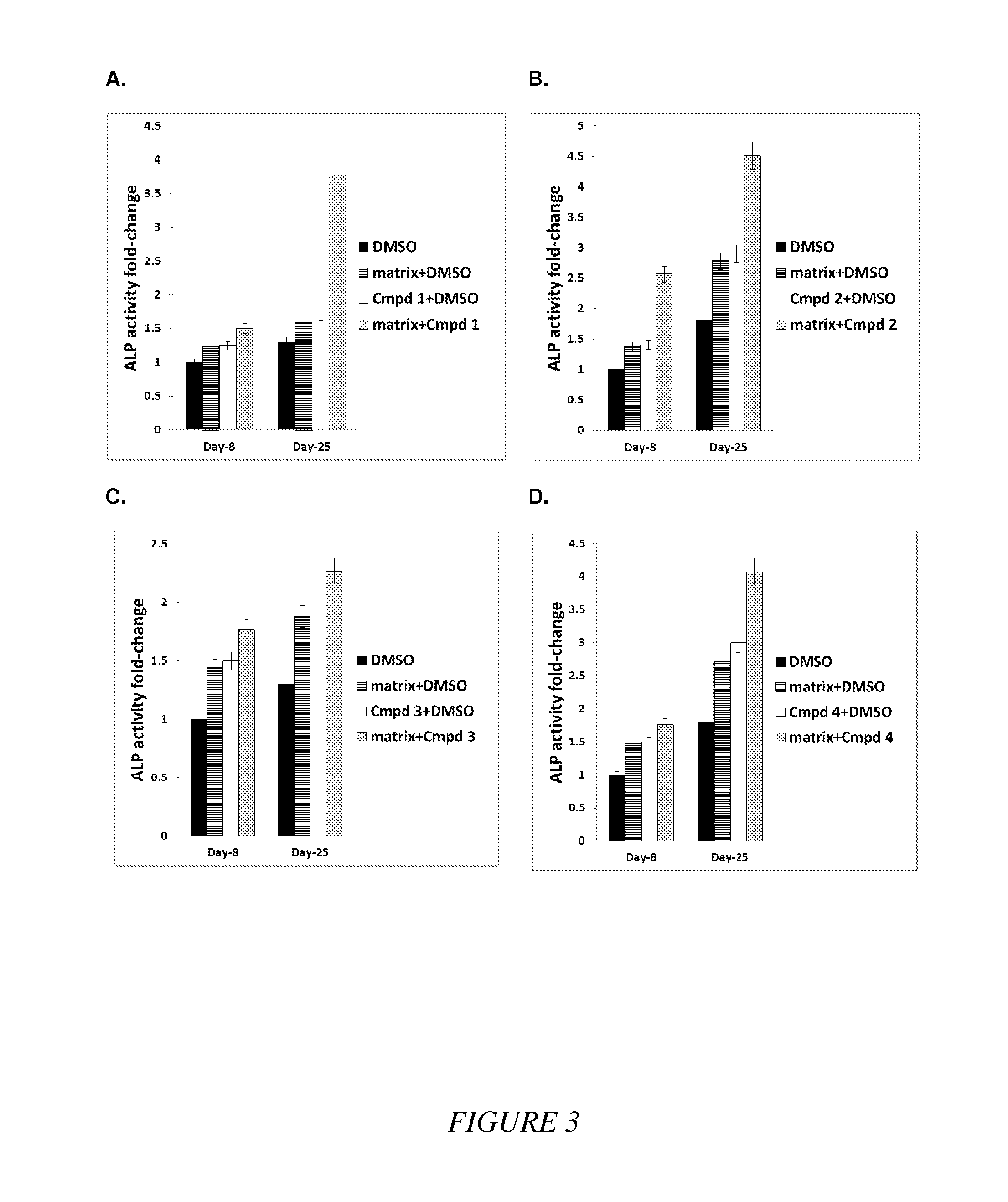Compounds and matrices for use in bone growth and repair
a technology of compounds and matrices, which is applied in the field of compound and matrices for use in bone growth and repair, can solve the problems of increasing the risk of bone fracture, reducing the maintenance of healthy bone with age, and not being very efficient at migrating to the site of bone injury required for bone formation
- Summary
- Abstract
- Description
- Claims
- Application Information
AI Technical Summary
Benefits of technology
Problems solved by technology
Method used
Image
Examples
example 1
General Synthetic Procedures for Obtaining Compounds of Formula II and their Characterization
[0332]The structures of general Formula II:
were synthesized according to the following scheme.
[0333]General procedure for synthesis of both 2,4-cis and 2,4-trans stereoisomers of 2-methyl-N-aryl-1,2,3,4-tetrahydroquinolin-4-amines from substituted anilines and acetaldehyde (Scheme 1). 1-H-benzotriazole (0.4 equiv) was added to a solution of acetaldehyde (2 equiv, 1M) and aniline (2.0 equiv, 1M) in ethanol at 21° C., stirred in a sealed flask, and after 3-7 days, concentrated. The crude product was purified by silica gel column chromatography (diethyl ether in hexanes) to yield cis-2-methyl-N-aryl-1,2,3,4-tetrahydroquinolin-4-amine and trans-2-methyl-N-aryl-1,2,3,4-tetrahydroquinolin-4-amine and mixed fractions of both stereoisomers. In some cases, tetrahydroquinolines are recrystalized from hot hexanes / diethyl ether (˜2 / 1).
[0334]General procedure for synthesis of cis-1-acetyl-2-methyl-N-aryl...
example 2
General Synthetic Procedures for Obtaining Compounds of Formula IV and their Characterization
[0366]The structures of general Formula IV:
were synthesized according to the general synthetic procedure of Scheme 2:
[0367]General procedure for reaction of alpha-substituted nitriles with ethyl carboxylates (first reaction in Scheme 2). A 2.2 M solution of NaOEt in ethanol (to deliver 1.2 equiv. of NaOEt) was added to a solution of the nitrile (1 equiv., 1M) at 21° C. The ethyl carboxylate was added and stirred at 40° C. for 2.5 hrs, cooled to 21° C., partitioned between water and benzene, vigorously stirred and brought to pH 2. The product was isolated by vacuum filtration.
[0368]General procedure for synthesis of 5-amino-substituted pyrazoles (reaction 2 in Scheme 2). Hydrazine monohydrate (2.4 equiv) was added to a solution of the alpha-substituted nitrile (1 equiv., 0.25 M) in 5% (v / v) acetic acid in toluene. The reaction mixture was brought to reflux for 6 hours, cooled to ambient tempe...
example 3
General Synthetic Procedures for Obtaining Compounds of Formula VI and their Characterization
[0384]The compounds of Formula VI:
were synthesized according to the general synthetic procedure of Schemes 3 and 4:
[0385]For Method A, boric anhydride (0.65 equiv.) was added to the 1,3-diketone (1 equiv, Scheme 3) or ketone (1 equiv., Scheme 4), stirred at room temperature for 1 h under Ar. Separately, the tri-n-butylborate (4.1 equiv.) was added to a solution of the aldehyde (2.0 equiv, 0.8 M) in ethyl acetate, the borate complex was added and n-butylamine (0.2 equiv) was added in 0.1 mL portions every 10 mins. The resulting mixture was stirred for 12-20 hrs, heated at 60° C., acidified with HCl(aq) (0.4 N, 1.5 mL per mmol of starting ketone or diketone) with stirring for 1 h, cooled and the organic layer was washed with water and brine, dried, filtered, concentrated to dryness, dissolved in EtOAc and MeOH (3 / 2) at −22° C. fridge overnight. The precipitate was collected by filtration, wash...
PUM
| Property | Measurement | Unit |
|---|---|---|
| Ri | aaaaa | aaaaa |
| Ri | aaaaa | aaaaa |
| temperatures | aaaaa | aaaaa |
Abstract
Description
Claims
Application Information
 Login to View More
Login to View More - R&D
- Intellectual Property
- Life Sciences
- Materials
- Tech Scout
- Unparalleled Data Quality
- Higher Quality Content
- 60% Fewer Hallucinations
Browse by: Latest US Patents, China's latest patents, Technical Efficacy Thesaurus, Application Domain, Technology Topic, Popular Technical Reports.
© 2025 PatSnap. All rights reserved.Legal|Privacy policy|Modern Slavery Act Transparency Statement|Sitemap|About US| Contact US: help@patsnap.com



